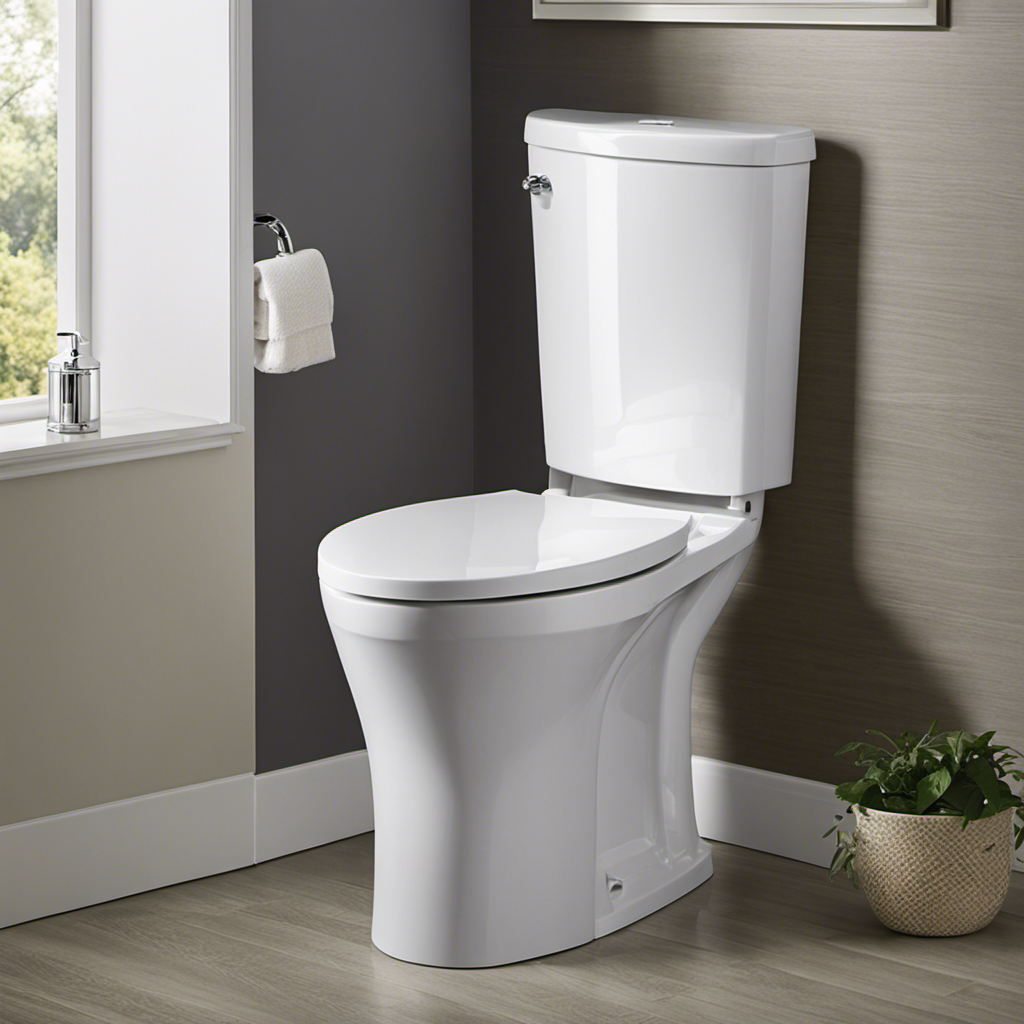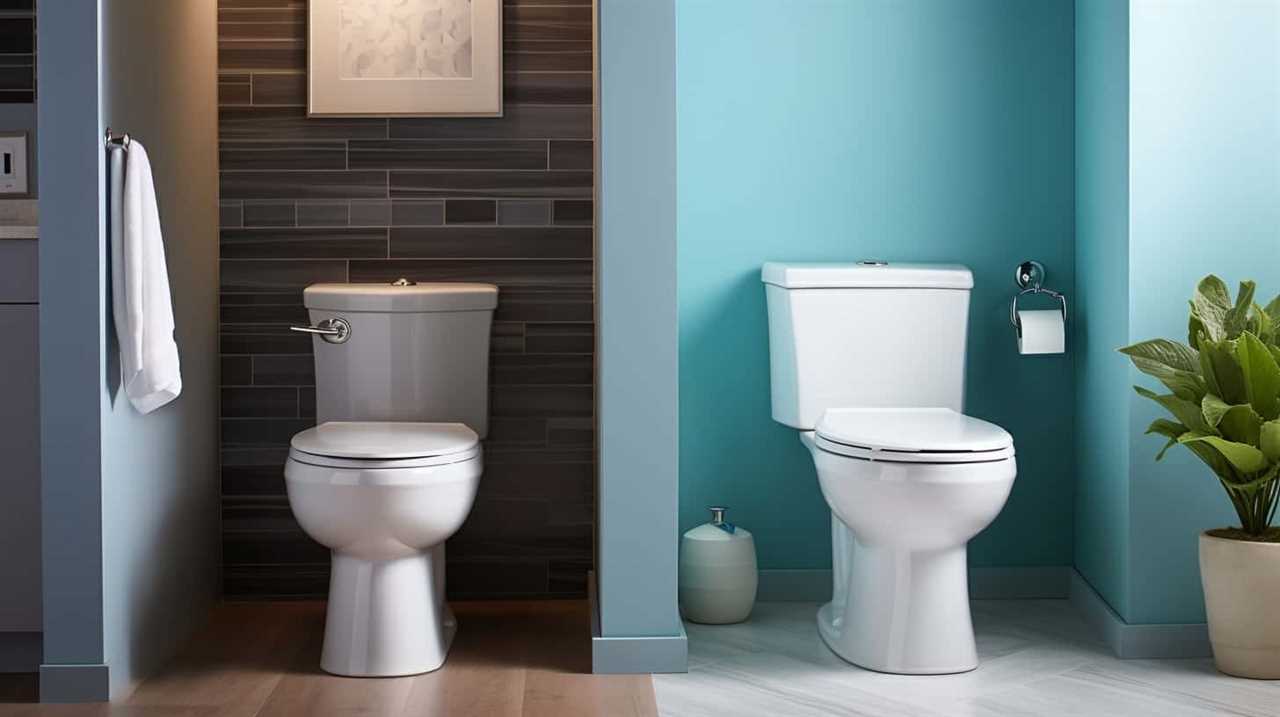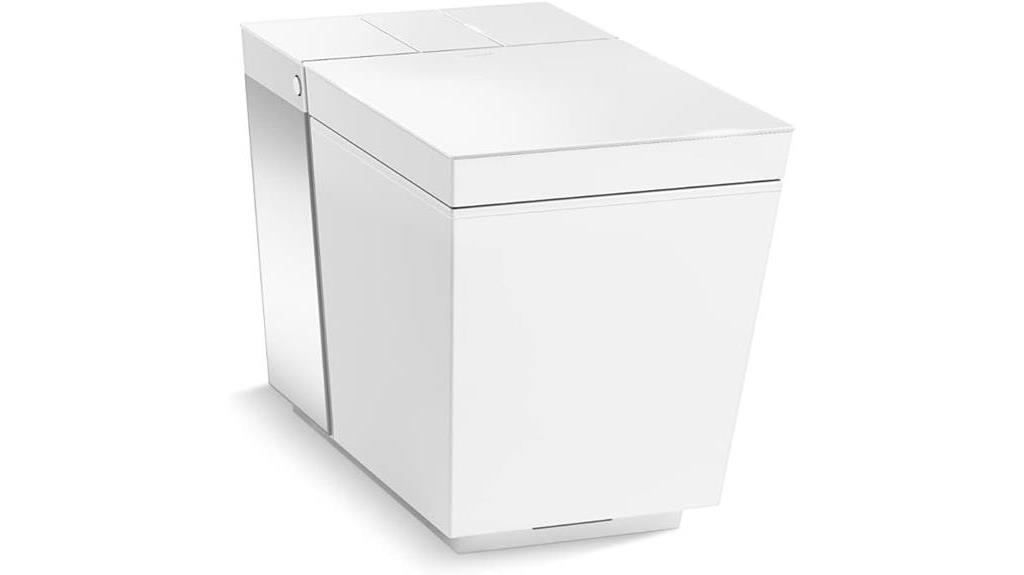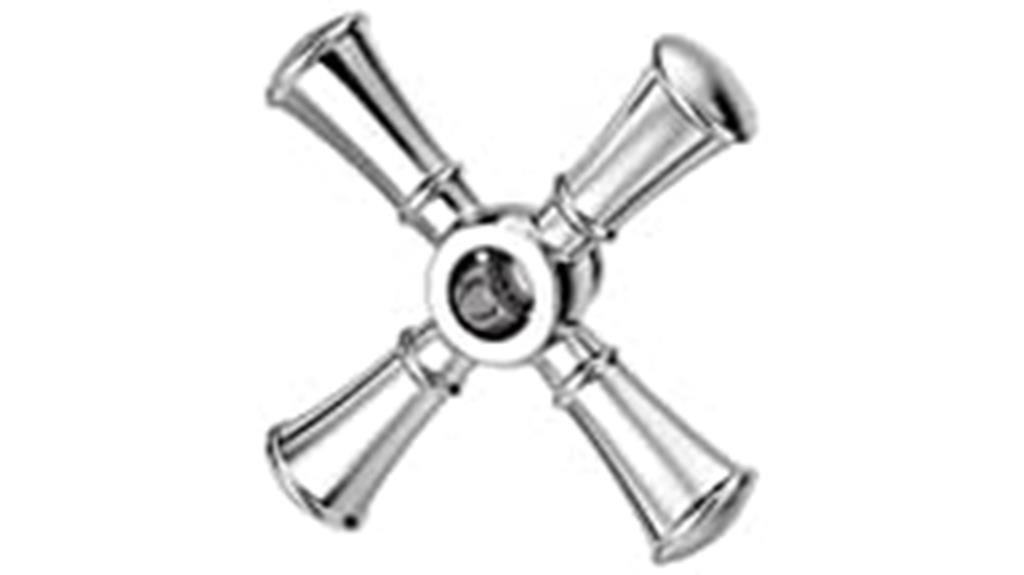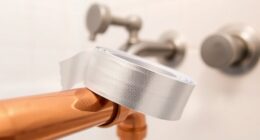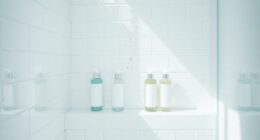As a homeowner, finding a toilet that combines power and style is a top priority. That’s why I turned to the TOTO Ultramax II.
With its Double Cyclone flushing system, this toilet delivers a powerful flush while conserving water.
The sleek and modern design of the elongated bowl not only adds a touch of sophistication to my bathroom, but it also reduces the risk of clogging.
Thanks to the SanaGloss coating, cleaning is a breeze and the toilet stays germ-free.
Plus, with its WaterSense certification, it’s an eco-friendly choice.
The Ultramax II truly stands out among other models with its one-piece design and water-saving features.
Key Takeaways
- The TOTO Ultramax II is a popular choice among consumers for its attractive design and solid construction.
- It features the Toto Double Cyclone flushing system, which provides a powerful flush and uses less water per flush.
- The toilet has an elongated bowl design, which is sleek and modern, and minimizes the risk of clogging and flooding.
- The bowl is designed without holes, making it easier to clean, and has a SanaGloss coating that prevents the build-up of bacteria and germs.
The TOTO Ultramax II’s Double Cyclone Flushing System
The TOTO Ultramax II’s Double Cyclone flushing system provides a powerful flush and uses less water per flush, making it an efficient and effective choice. This flushing mechanism is designed to pull the flush water into the bowl and then exit with added force, ensuring that toilet paper and waste are completely eliminated in just one flush.
With a water consumption rate of as little as 1.28 gallons per flush, the Double Cyclone flushing system is also water-efficient, potentially saving a significant amount of water per year.
One of the pros of this flushing mechanism is its ability to keep the bowl cleaner in between washings. However, a potential con could be that some users may find the forceful flush to be too powerful for their liking.
Overall, the Double Cyclone flushing system of the TOTO Ultramax II offers excellent flushing mechanism efficiency.
Sleek and Modern Elongated Bowl Design
I really like how the elongated bowl of this toilet looks and feels. The sleek design of the TOTO Ultramax II’s elongated bowl adds a touch of modern elegance to any bathroom. Not only does it enhance the overall aesthetics, but it also offers several advantages.
Firstly, the elongated bowl provides added comfort and support, distributing weight evenly and making sitting on the toilet more comfortable. Additionally, the elongated shape minimizes the risk of clogging and flooding, as it can handle more capacity compared to round bowls.
Furthermore, the sleek design of the elongated bowl has a significant impact on bathroom aesthetics. It gives a more polished and streamlined look, making the bathroom appear more modern and sophisticated. The elongated bowl design also complements other bathroom fixtures and fittings, creating a cohesive and stylish space.
Overall, the advantages of an elongated bowl design, such as enhanced comfort and improved bathroom aesthetics, make the TOTO Ultramax II a popular choice among consumers.
Easy Maintenance With Sanagloss Coating
Maintaining the toilet is a breeze with the SanaGloss coating. It prevents the build-up of bacteria and germs. The SanaGloss coating is a unique finishing on the seat surface of the TOTO Ultramax II. It makes it shiny and resistant to stains and odors. This special glazing not only keeps the toilet seat cleaner, but also eliminates the need for harsh cleaning chemicals.
To clean the Ultramax II with SanaGloss coating, simply use a mild, non-abrasive cleaner and a soft cloth or sponge. Avoid using abrasive cleaners or scrub brushes, as they can damage the SanaGloss surface.
Regular cleaning and maintenance will ensure that your Ultramax II with SanaGloss coating stays looking clean and pristine. It will also prevent the build-up of bacteria and germs.
Water Efficiency With Watersense Certification
Saving water is easy with the WaterSense certified TOTO Ultramax II toilet. This toilet is designed to be water-efficient, offering significant water-saving benefits. With its powerful Double Cyclone flushing system, it uses as little as 1.28 gallons of water per flush, helping to minimize water consumption and reduce your environmental impact. By choosing the Ultramax II, you can make a positive contribution to water conservation efforts.
The WaterSense certification ensures that this toilet meets strict criteria for water efficiency, making it a reliable choice for those looking to save water without compromising on performance. With each flush, you can be confident that you are using water efficiently and helping to conserve this precious resource.
In addition to its water-saving benefits, the TOTO Ultramax II also offers a sleek design and easy maintenance features. Its elongated bowl, SanaGloss coating, and rim design without holes make cleaning a breeze. So not only are you saving water, but you are also saving time and effort in maintaining a clean and hygienic toilet.
Overall, the WaterSense certified TOTO Ultramax II toilet is a smart choice for those who want to save water, reduce their environmental impact, and enjoy the benefits of a high-quality and efficient toilet.
Comfort and Convenience With Ease of Use
Using the TOTO Ultramax II toilet is a comfortable and convenient experience due to its ergonomic design and silent operation.
The elongated bowl design distributes weight evenly, providing comfortable seating for extended periods.
The toilet also features a SoftClose seat, ensuring no pinching of fingers and making it safe for children.
The powerful flush of the Ultramax II operates silently, unlike cheaper toilets that can be noisy.
With its user-friendly features, the Ultramax II offers ease of use and maintenance.
The elongated bowl design minimizes the risk of clogging and flooding, and the rim is designed without holes, making it easier to clean.
The toilet’s SanaGloss coating prevents the build-up of bacteria and germs, ensuring a hygienic and hassle-free experience.
Comparison to Other Models: What Sets the Ultramax II Apart
When comparing the TOTO Ultramax II to other models on the market, it is important to consider the pros and cons of each option. The Ultramax II stands out for its powerful flush, sleek design, and water-saving capabilities.
In terms of water conservation, the Ultramax II is a frontrunner. With its WaterSense certification and Double Cyclone flushing system, it consumes as little as 1.28 gallons per flush. This not only helps to reduce water usage but also contributes to cost savings over time.
In comparison to other models, the Ultramax II offers several advantages. For instance, it is a one-piece toilet, which makes it easier to clean and install compared to two-piece toilets. It also features the SanaGloss coating, which prevents the build-up of bacteria and makes cleaning effortless.
However, it is important to note that the Ultramax II may not be the perfect fit for everyone. While it excels in water conservation and ease of use, other models like the TOTO Drake II and the American Standards Champion 4 offer different features such as powerful flushes and extra storage options. Additionally, the Ultramax II may come at a higher price point compared to more affordable options like the Kohler Cimarron.
Overall, the TOTO Ultramax II is an excellent choice for those who prioritize water conservation and easy maintenance. Its powerful flush, sleek design, and water-saving capabilities make it a top contender in the market.
Top-Quality Option With Powerful Flush and Sleek Design
I really appreciate the top-quality features of this toilet, like its efficient flushing system and modern appearance. The TOTO Ultramax II is not only a cost-effective choice with high performance, but it is also an eco-friendly option with water-saving technology.
Here are three reasons why the Ultramax II stands out:
-
Powerful Flush: The Ultramax II features the Toto Double Cyclone flushing system, which provides a strong flush while using less water per flush. It effectively gets rid of waste in just one flush, saving you time and water.
-
Sleek Design: With its elongated bowl design and sleek appearance, the Ultramax II adds a touch of modernity to any bathroom. Its compact design also makes it a space-saving option.
-
Water-Saving Technology: The Ultramax II is WaterSense certified, consuming as little as 1.28 gallons per flush. This not only helps you save water but also reduces your water bill.
Overall, the TOTO Ultramax II is a top-quality toilet that combines performance, style, and eco-friendliness.
Frequently Asked Questions
How Does the TOTO Ultramax II Compare to Other TOTO Toilet Models?
When comparing the TOTO Ultramax II to other TOTO toilet models, it stands out for its powerful flush, sleek design, and water-saving features. It offers top-quality performance and durability compared to other leading toilet brands. Additionally, it may be priced higher than similar high-end toilet models.
Does the TOTO Ultramax II Come With a Warranty?
Yes, the TOTO Ultramax II does come with a warranty. It is known for its durability, making it a reliable choice. The warranty ensures that you are covered in case of any issues.
Can the TOTO Ultramax II Be Installed in Small Bathrooms?
Yes, the TOTO Ultramax II can be installed in small bathrooms. Its compact design and space-saving installation make it a great choice for limited spaces without compromising on performance or style.
What Is the Recommended Cleaning Method for the Sanagloss Coating?
I find that the best recommended cleaning method for the SanaGloss coating is to use a mild, non-abrasive cleaner and a soft cloth. Regular cleaning with this method will help maintain the shine and prevent the buildup of bacteria and germs.
Is the TOTO Ultramax II Compatible With Bidet Attachments?
Yes, the TOTO Ultramax II is compatible with bidet attachments. It offers various bidet attachment options, making it convenient for installation. The sleek design and powerful flush of the Ultramax II enhance the bidet experience.
Conclusion
After researching the TOTO Ultramax II, it is clear that this toilet is a top-quality option for any bathroom. Its powerful Double Cyclone flushing system and sleek design make it a standout choice.
The easy maintenance with the SanaGloss coating and water efficiency with Watersense certification are additional benefits. The comfort and convenience of the Ultramax II, along with its unique features, truly set it apart from other models.
Overall, if you’re looking for a toilet that combines power, style, and efficiency, the TOTO Ultramax II is the perfect choice.
